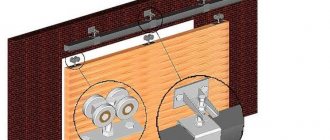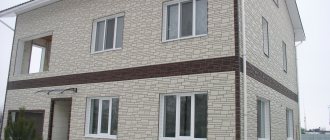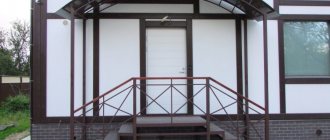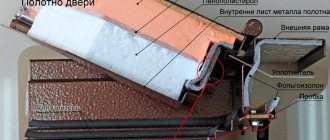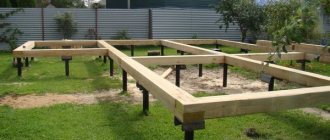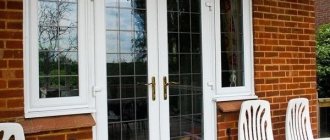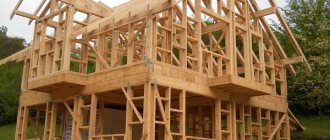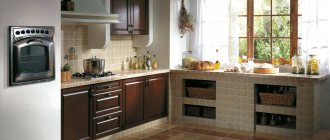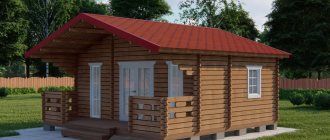The choice of heating boiler depends on 4 main factors:
- price and availability of energy resources;
- ease of operation of heating equipment;
- cost of service;
- the size of the initial financial investment.
The costs include the purchase of the unit itself, installation, connection to the water system (piping). Our goal is to reveal the pros and cons of existing types of heat generators, and then suggest which boiler to choose for heating a particular private home.
Action plan
When selecting a home heating boiler, we suggest following the following algorithm:
- Find out what energy products are available to you and find out how much they cost. It is better to immediately focus on 2 types of fuel - primary and auxiliary, for example, firewood and electricity.
- Find out the thermal power required to heat a country house or apartment. It is necessary to calculate the load on the water heating system; calculation methods are described in detail in a separate instruction.
- Find a place for the hot water boiler. The area of the future furnace room should be sufficient for the installation of a heating unit, auxiliary equipment and piping elements.
- Read the review of household heat generators and recommendations for choosing the appropriate model (descriptions of units and tips are presented below).
- Visit several stores and trading companies, check prices and determine the project budget, taking into account the purchase of piping parts - pipes, shut-off valves, and so on. Find out the weight and dimensions of suitable boilers.
- At home, figure out exactly where to place the heater, chimney and other elements, and finally select the optimal boiler option.
Example of placement of a TT boiler with a side passage for maintenance
Advice. To thoroughly understand the cost and applicability of energy resources, we recommend reading our article and deciding what is more profitable to heat your home in specific living conditions.
Having determined the weight of the heating unit, make sure the foundation is secure. After all, you cannot place a heavy cast-iron apparatus on wooden floors; you will have to pour a foundation or a concrete screed. If the boiler room area is too small, choose wall-mounted versions of heaters or build an extension outside the house.
When determining the power of the future heat source, take into account the energy costs for hot water supply. If you plan to heat water for household needs, the required performance of the device should be increased by 30-50%, depending on the number of residents and the taps opened at the same time.
The best long-burning models with a water circuit
Heating boilers with a water circuit allow you to quickly and evenly heat the room. They are a great option for a year-round home.
Stay up to date! Among the features of such devices are high efficiency, stable savings in fuel materials and low heat loss.
The higher cost of long-burning boilers compared to other models is justified by the presence of a number of technical advantages.
Rating of the TOP 6 long-burning models with a water circuit in terms of price and quality ratio.
Stropuva Mini S8
The unique design of Stropuva Mini S8 allows you to use solid wood fuel as efficiently as possible and maintain the temperature in the room without overspending.
The single-circuit model Stropuva Mini S8 maintains long-term combustion without additional fuel, providing heat to medium-sized rooms.
The boiler does not require electricity to operate; the process is supported by natural draft.
The power is enough to heat the house even in severe frosts.
Specifications:
- thermal power - 8 kW;
- recommended heating area - 80 sq. m;
- Efficiency - 85%;
- type of fuel - firewood, wood briquettes;
- coolant temperature - 60–95 °C;
- water pressure in the circuit (max) - 1.5 bar.
Advantages
- compact dimensions (barrel-shaped body);
- sold completely assembled;
- strong, reliable handles on the doors prevent inadvertent opening;
- no power required;
- economical with high efficiency (up to 20 hours on wood).
Flaws
- heavy;
- the lining above the door becomes covered with soot, which is difficult to clean;
- Not very convenient to load fuel.
Teplodar Cooper Expert-15
The Cooper Expert-15 model is distinguished by its high combustion duration, which is facilitated by the well-thought-out design of the heat exchanger and three-zone air supply.
The boiler is a long-burning device with a water circuit; it is excellent for heating medium and large rooms.
Firewood, briquettes and coal can be used as fuel. The boiler supports four operating modes.
A block of heating elements of sufficient power is used as a unit for maintaining heat. If desired, the user can install a burner.
Key parameters:
- power - 15 kW;
- recommended heating area - 150 sq. m;
- Efficiency - 80%;
- type of fuel - coal, firewood;
- Heating element for maintaining temperature - 6 kW;
- coolant temperature - 50–95 °C;
- water pressure in the circuit (max) - 3 bar.
Advantages
- high-quality heating of the room with the ability to adjust the combustion intensity;
- burning duration on one load of coal is up to 24 hours;
- versatility, you can use both firewood and coal;
- safety;
- high efficiency.
Flaws
- complex installation and connection;
- a separate room is required for installation;
- Designed for short lengths of firewood.
ZOTA Topol-32VK
According to the manufacturer, the ZOTA Topol-32VK boiler has the highest efficiency among similar solid fuel and combined budget models.
A single-circuit boiler released in 2021 is suitable for large areas.
It uses an improved adjustable ash door blower damper.
Adjustment is made using a screw in manual mode.
The design provides for the installation of a block of heating elements with an external control panel.
Key parameters:
- power - 10–32 kW;
- recommended heating area - 320 sq. m;
- Efficiency - 75%;
- type of fuel - coal, coal briquettes, firewood, wood briquettes;
- coolant temperature (max) - 95 °C;
- water pressure in the circuit (max) - 3 bar.
Advantages
- wide range of fuels used;
- Fuel loading is possible both in vertical and horizontal planes;
- there is a removable damper (convenient to clean the heat exchanger);
- installation of heating elements with external control is provided;
- installation of a gas burner is possible.
Flaws
- no automation;
- no built-in circulation pump;
- There is no built-in expansion tank.
Stropuva S40P
The Stropuva S40P boiler has a unique design that allows the most efficient and economical use of the volume of fuel with its gradual combustion.
The single-circuit model is ideal for heating large rooms; it maintains excellent temperature balance without wasting energy.
Stropuva S40P maintains combustion for up to 72 hours when using firewood or fuel briquettes.
The boiler does not require an electrical connection; combustion is supported by natural draft. The maximum power of the device is 40 kW.
Specifications:
- power - 40 kW;
- recommended heating area - 400 sq. m;
- Efficiency - 85%;
- type of fuel - pellets, firewood, wood briquettes;
- blower fan;
- coolant temperature - 60–95 °C;
- water pressure in the circuit (max) - 1.5 bar.
Advantages
- power;
- ease of use;
- long burning time;
- availability of fuel (works on any type of firewood and briquettes);
- efficiency - fuel is consumed gradually;
- safety - the integral steel structure is equipped with a safety valve that relieves pressure during a sudden surge.
Flaws
- mechanical control;
- The blower fan is noisy.
Stropuva Mini S8U
Due to the rising cost of gas for consumers, the Stropuva Mini S8U model can effectively compete even with the most economical gas boilers.
This single-circuit coal boiler of medium power is suitable for heating small and medium-sized premises.
In addition to coal, it can use other alternative energy sources.
Depending on the heat loss of the building, external temperature and fuel quality, the maximum burning time of one bookmark is: coal - 120 hours, pellets - 72 hours, briquettes - 48 hours, firewood - 30 hours.
Key parameters:
- power - 8 kW;
- recommended heating area - 80 sq. m;
- Efficiency - 85%;
- type of fuel - coal, pellets, firewood, wood briquettes;
- blower fan;
- coolant temperature - 60–95 °C;
- water pressure in the circuit (max) - 1.5 bar.
Advantages
- high efficiency;
- reliability and safety;
- long service life - 5 years, including annual maintenance;
- ergonomic design;
- aesthetic appearance.
Flaws
- no expansion tank provided;
- no circulation pump;
- low power.
NMK Magnum KDG 15 TE
This single-circuit model has established itself as one of the best solutions for heating country houses and other medium-sized premises.
Magnum KDG 15 TE is one of the representatives of solid fuel heating devices in the line of long-burning boilers.
The model is designed for heating with coal and coal briquettes.
The designers have implemented the option of installing heating elements to maintain a comfortable temperature in the room at night and in the off-season.
The block of heating elements can be used when burning fuel in the boiler and independently. Magnum KDG 15 TE is distinguished by a long time of uninterrupted operation during the heating season.
Key parameters:
- power - 15 kW;
- The recommended heating area is 120 square meters. m;
- Efficiency - 75%;
- type of fuel - coal, coal briquettes;
- coolant temperature - 45–85 °C;
- water pressure in the circuit (max) - 2 bar.
Advantages
- high efficiency;
- convenient coal filling;
- it is possible to remove ash without stopping the operation of the boiler;
- if necessary, can be equipped with heating elements;
- ergonomics - all elements are located as conveniently as possible.
Flaws
- difficulties may arise during assembly;
- imperfect door seals;
- not the most economical unit.
Types of water heating devices
All modern heating boilers used in private houses and apartments are divided into groups according to the following criteria:
- consumed energy carrier – natural gas, electricity, solid fuel, etc.;
- by installation method - floor and wall;
- in terms of functionality - single-circuit and double-circuit, the latter additionally heats water for hot water supply;
- need for electrical connection - dependent and non-volatile.
Note. Heat generators of each group are also divided into types according to the material of the heating element or heat exchanger, type of combustion chamber, degree of automation and other design features.
We propose to consider boiler installations, dividing them according to the main criterion - the energy carriers used. Existing types of devices:
- gas;
- solid fuel;
- electrical;
- diesel;
- combined, otherwise multi-fuel.
Now we will analyze each group separately, covering in detail all the disadvantages and advantages of boilers.
Combination boilers
There is also such a modification of heating boilers as combined heating devices. The most popular option is a solid fuel boiler with several electric heating elements. Such units operate as TT equipment while the wood or coal is burning; when the fire goes out, the boiler cools down slightly, the electrical part turns on. In this case, heating elements are not able to fully heat the house, but they manage to support the system. That is, in the morning the house will not be cold. And in the event of a long absence, the heating elements will not allow the system to freeze.
Several combi boilers
Another popular option is TT combination boilers with liquid fuel burners. Such units have two separate combustion chambers. One for solid fuel, the second for a burner with liquid fuel.
The advantages of such boilers are obvious: you can use several types of fuel. The disadvantage is the high price and average efficiency - the efficiency of each part is not very high. So a combination boiler for heating a private house is a controversial decision.
Characteristics of gas heaters
The main fuel of the units is a natural mixture of methane-based gases obtained from main pipelines. When it is necessary to organize autonomous gas heating, it is possible to switch to a liquefied propane-butane mixture supplied from a gas holder or a ramp with cylinders.
Depending on the installation method, the units are wall-mounted and floor-mounted, and the latter usually do not require electricity. Mounted heat generators are mini-boiler rooms equipped with an expansion tank, a circulation pump and an electronic control unit.
Reference. Floor-standing boilers of imported origin (for example, Czech Protherm) are offered in two versions - without connection to the house electrical network and volatile ones. The former are equipped only with a burner and automatic safety system, while the design of the latter is similar to their wall-mounted “brothers”.
According to the method of fuel combustion and efficiency, gas heaters are divided into 3 categories:
- Atmospheric, open combustion chamber, efficiency - up to 90%. Air is supplied to the burner naturally from the boiler room, and the gases that give off heat are discharged into a traditional chimney.
- Turbocharged (supercharged), combustion chamber is completely closed, efficiency - 93%. The air is pumped by a fan, the smoke goes out into the street through a double-walled coaxial pipe.
- Condensing units use the latent heat of combustion of hydrocarbons, so the efficiency reaches 96-97%. The design is similar to a turbocharged boiler, but the closed chamber and burner are cylindrical in shape.
Turbocharged model of a suspended boiler equipped with a plate heat exchanger for heating water.
All of these heaters can be supplied with a DHW water circuit. For this purpose, 2 types of heat exchangers are used - a separate plate made of stainless steel and a copper shell-and-tube (built inside the main heater).
Addition. The main heat exchangers of floor-standing versions of boilers are made of cast iron or steel. Wall-mounted units are equipped with copper finned radiators.
The price of boilers increases in the order of listing - atmospheric units are considered inexpensive, then there are heaters with a turbine. The cost of condensing equipment is approximately twice as high as conventional heat generators (from one manufacturer).
Low temperature condensing units are well suited for heating underfloor heating
Advantages of gas boilers:
- the devices are quite economical and reliable in operation;
- high degree of automation - the homeowner does not need to pay attention to the device;
- ease of operation, maintenance – once a year;
- the boiler room is clean, the noise level is low;
- for the pressurized model you do not have to build a classic chimney - the pipe is routed horizontally through the wall.
As for the disadvantages: the gas heat generators themselves are flawless, the problem is different - connecting the main line to a private house and obtaining the necessary permits. The first service costs a lot of money, the second takes a lot of time. An intermediate option is a device for autonomous supply of liquefied gas from cylinders or underground containers.
If there is gas
If there is a gas main near the house, it makes sense to consider purchasing a gas boiler. At the moment, in most regions, gas heating is the cheapest. At the same time, gas heating boilers are autonomous - you can not approach them for weeks, and practically do not require preventive maintenance. The only drawback of this solution is the considerable amount it costs to connect to the highway.
Gas is called the country's blue gold
Types of gas boilers
Depending on the type of location, gas heating boilers can be wall-mounted or floor-mounted. The maximum power of wall-mounted options is 60 kW; floor-standing units are also available with 100 kW or more. In addition, some models can work in cascade. What are the benefits of wall-mounted gas boilers? Because they can be installed in the kitchen, especially since their design matches the kitchen design.
Wall-mounted boilers can be installed in kitchens
A separate room is required for installation of a gas floor-standing boiler with a power of more than 60 kW. This can be a dedicated room in the house or an extension with a separate entrance - a boiler room.
Floor-standing require a separate room
You can install a gas boiler even if there is no mains, but it is possible to buy liquefied gas. In this option, a floor-standing gas boiler is installed with a burner that can work with liquefied gas (usually reconfiguration is required). It’s difficult to say right away about the efficiency of such heating: you have to calculate how much 1 kW of heat costs when using the available fuel options. Draw conclusions based on the calculation results.
Gas may be in cylinders
Types of burners
Two types of burners can be installed in wall-mounted gas boilers - atmospheric (open) and turbocharged (closed). Atmospheric burners require a chimney with good draft; turbocharged burners are connected to a coaxial chimney, which can be led directly through the wall near the boiler.
These combustion chambers also differ in the way they select air for combustion. In open burners, air is taken from the room, therefore such rooms must be equipped with supply ventilation of sufficient power. In closed combustion chambers, oxygen is supplied through one of the pipes of the coaxial chimney. Therefore, there are no special requirements for ventilation. But turbocharged boilers have their drawbacks: a chimney installed in the wall can become overgrown with frost, covered with snow, etc. In this case, the boiler does not turn on.
The main difference between wall-mounted gas boilers is the type of burner
When choosing a gas boiler, you should also pay attention to the number of positions in which the gas burner can operate. There are three modifications:
- Single stage. There are only two operating modes - full power and off. The cheapest burners, but the gas consumption is the highest, that is, such boilers are uneconomical to operate.
- Two-stage. There are two operating modes - 100% power and 50%. The third position is off. These burners are more economical and make it easier to maintain the desired temperature.
- Modulated. The most expensive, but also the most economical burners. Depending on the need, they can be turned on either at full power or at 10%, and the adjustment is smooth.
It is clear that in the long term, a boiler with a modulating burner is better for heating a private house. They are more expensive to purchase, but more economical during operation.
Condensing gas boilers
Above we discussed traditional gas boilers for heating a private home. They are also called high-temperature, since at the outlet they produce coolant with a temperature of 45-50°C and higher. Such units are ideal for working with radiator heating.
Condensing boilers are distinguished by the fact that they are effective when operating in low temperature mode - with a temperature in the return pipeline no higher than +40°C. In this case, gas is used most economically - due to the condensation of vapors contained in flue gases, more heat is transferred, which leads to a significant reduction in gas consumption.
A condensing gas boiler for heating a private house with heated floors is an ideal option
This feature of condensing boilers makes them ideal for heating a home with warm water floors. This boiler for heating a private house can produce coolant at the outlet at +35°C, then the return temperature will be about +30°C. Due to this, heating will be economical.
But, as usual, there were some drawbacks. The first is that the condensate formed is very caustic. Therefore, the chimney should be installed only from stainless steel, and of high quality. The second disadvantage is that the price of condensing boilers is higher than traditional boilers of the same capacity. This is due to a more complex design and also to the fact that condensate-resistant materials are used.
Solid fuel boilers - types and features
Heating units of this group are usually divided into 4 subtypes according to the principle of operation:
- Classic TT direct combustion boilers. The fuel is burned on a grate, heating the walls of the water jacket. Volatile combustion products are cooled in a fire-tube or water-tube heat exchanger and sent to the chimney, which operates thanks to natural draft. The fuel used is wood and coal, the maximum efficiency is 75%.
- In pyrolysis units, air is forced into the furnace by a fan. Combustion occurs in the primary chamber, and afterburning of wood gases occurs in the secondary chamber. The main fuel is dry wood, the efficiency declared by the manufacturers is 86%.
- Long-burning wood and coal boilers differ from classic heat generators in the size of the firebox. The principle is simple - the more firewood goes in, the longer it burns. The remaining parameters are identical.
- If you place a pellet burner in the main chamber of a conventional wood heater, an automatic TT boiler will come out. Thanks to the low moisture content of wood pellets and electronic control of pellet supply, the device achieves an efficiency of 87%.
Explanation. In a water-tube heat exchanger, the coolant flows through channels and is washed outside by hot gases. The fire tube design is designed in reverse: smoke passes through the channels of the water jacket. The efficiency of heat exchangers is approximately the same.
Most household pellet boilers use a retort burner, where the flame burns vertically from bottom to top. In industrial installations of higher power (from 50 kW), a torch-type burner device is used - the flame shoots horizontally.
Solid fuel boilers are offered only in a floor-standing version. Heat exchanger material is steel or cast iron, firebox wall thickness is 3...8 mm. Non-volatile models are equipped with a mechanical thermostat - a draft regulator that allows access to air through a damper and a chain. Automated versions are equipped with a controller and a fan - blower or smoke exhauster.
A retort-type pellet burner is combined with a conventional vertical firebox; the torch device requires a long horizontal chamber
Pros and cons of classic units
In addition to the attractive price, traditional boilers are famous for their omnivorous nature - briquettes, brown coal and firewood of varying humidity can be placed in the firebox. True, you will get the appropriate result - wet fuel will not produce much heat, but it will release soot inside the chimney. Such universal units include solid fuel boilers from a well-known Russian manufacturer.
Heating TT-boiler “Kupper” PRO-42 in section
The company occupies a leading position in the boiler equipment market; the Teplodar brand itself has existed for more than 20 years. Boilers from this manufacturer are distinguished by their reliability and variety of characteristics. In a wide price range of products, every homeowner will be able to choose a suitable heat generator model.
Other advantages of the units:
- ease of maintenance;
- low cost of energy;
- you don’t need installation permits – you do the installation yourself;
- The device can always be modified, provided that the design allows.
Retrofitting means installing a fan with an automation unit or a pellet burner. The supercharger is mounted in the ash pit door, the retort bowl is placed inside the firebox, and the feed auger is placed in the hole in the side wall.
Designs of traditional TT boilers designed for direct combustion of fuel
Note. You can learn more about Teplodar products on the official website https://www.teplodar.ru/catalog/kotli/.
The classic heater also has many disadvantages:
- the device requires constant attention - loading is done at intervals of 4-6 hours, cleaning - daily;
- the complexity of the piping - it is necessary to provide protection against condensation, it is very desirable to connect a buffer tank;
- the higher the humidity of the firewood, the faster the soot sticks in the chimney and smoke pipes, the more often cleaning is done;
- the mechanical thermostat does not close the damper tightly, air leaks through the gap, which is why the boiler can boil under certain conditions.
For the reasons mentioned above, it is better to use a conventional boiler in conjunction with another heat generator, for example, an electric one. Otherwise, you will have to stoke in the middle of the night or wake up in the morning to a cold house.
About pyrolysis heat generators
Here we will express our opinion, which completely coincides with the expert’s opinion. The only advantage of a gas generator boiler - decent efficiency - pales in comparison with numerous disadvantages:
- high price of the product;
- demanding on fuel - you need wood with a moisture content of 20-25%;
- the ceramic nozzle between the primary and secondary chambers often fails;
- pyrolysis boilers are bulky and heavy compared to classic heaters.
The main combustion occurs in the secondary chamber, since the smoke exhauster forcibly draws air and gases from the main firebox
Reference. If you do not meet the requirements for fuel moisture, the process of gas release from wood - pyrolysis - will proceed too weakly. The efficiency of the unit will drop to the level of a standard furnace or boiler, that is, it makes no sense to overpay for the product.
Long-burning boiler systems
Let us immediately note that long-burning heat generators include all products with a large fuel chamber volume. The method of burning wood - from above or from below - does not matter; the duration of the process is achieved due to the capacity of the firebox. The approximate figure is 100 liters or more with a unit power of 20-30 kW, then one bookmark will be enough for 8-14 hours of continuous operation. All parameters are described in more detail in our other guide.
The negative and positive aspects of operating such a heater repeat the pros and cons of traditional TT boilers. One significant drawback has been fixed - now the load of firewood or coal will last all night. A positive moment brings with it a negative effect - the unit has noticeably “grown” in height.
Advantages of pellet equipment
Pellet boilers are considered the most progressive solid fuel units. What is the attraction:
- decent efficiency;
- full automation of work;
- cleaning and loading of fuel is carried out at intervals of 3...7 days, depending on the quality of the pellets;
- the chimney does not become clogged with soot;
- comfort and ease of use.
This burner can be built inside a classic wood heater. One problem - the product will cost twice as much as the boiler itself
Reference. The newest retort burners are equipped with electric ignition and a full set of automatic safety systems, including a built-in fire extinguishing system. The operating principle of a screw feed is also implemented in other TT boilers that burn fine grade coal and wood chips of a certain fraction.
The disadvantage of an automated heat source is the high price. In the event of a breakdown of the gearbox, auger or electronics, you will also have to pay a considerable amount. The second point is that fuel is not too cheap compared to firewood.
Video: choosing a direct combustion TT boiler
How to choose a solid fuel boiler for a private home
Direct, long burning or pyrolysis
First of all, the choice depends on the budget. Direct combustion is used in traditional solid fuel boilers: inexpensive, mechanical and easy to operate, do not require connection to the electrical network and are unpretentious in the type and quality of fuel.
If the budget is very limited, it is optimal to focus on classic TT boilers and not consider others. Despite the fact that their efficiency is low, and the owner is required to be regularly present in the boiler room to control combustion and load a new portion of fuel (every 2-4 hours), this is still the optimal and most popular option for both temporary and permanent residence in the house. This is explained by the simplicity, practicality of the design and, of course, affordable cost, starting from 12-13 thousand rubles. (low-power Teplodar Kupper Praktik 8, Karakan 8TPE 3 8 kW).
If the budget is not so limited, then there are two options: long-burning boilers using the “top-down” principle and pyrolysis boilers. When choosing the first option, you can count on a practically autonomous and, in most cases, non-volatile system with simple mechanical control. The efficiency of such boilers is higher, and fuel economy is correspondingly higher (on average by 10-15%). The burning time of one stack of firewood is on average 10-12 hours, but in some models it can reach 20-24 hours. Coal burns out on average in 24-40 hours in standard popular models (Stropuva S15U, Heiztechnik Q Alfa 15, TIS PRO 11), but there are models with a burning duration of up to 7 days (Stropuva S20U, WEEK KO-60). Therefore, it is advisable to heat them with coal. Prices for this category of TT boilers start from 55-60 thousand rubles.
Pyrolysis solid fuel boilers, unlike the previous ones, are more suitable if you plan to use firewood as fuel. And the efficiency of this technology is the highest today, saving on average from 20 to 25%. When choosing this option, you can get a practically autonomous heating system, but most often it is volatile, with automated electronic control, and remote control via a mobile application is possible. On average, the cost of pyrolysis models is higher than top-down long-burning models, but prices still start at 60 thousand rubles for mechanical options (Burzhuy-K Modern-12, Trayan TB-10-2KT).
Poll: what budget do you have for the purchase of a solid fuel boiler?
Heat exchanger material
Cast iron sectional heat exchanger using the example of Viadrus U22.
The primary heat exchanger is the main element of the boiler, which is the walls of the combustion chamber. A coolant (usually water) circulates in it, accumulating heat from the fuel burned inside the combustion chamber. The cost of the boiler, its practicality, service life and acceptable types of fuel depend on the material of the heat exchanger. Two versions are possible:
- Steel heat exchanger . The most common due to its low cost and lightness, invulnerability to temperature changes, and practicality. Typically used in boilers of low and medium price segments. Often, steel heat exchangers are not designed for burning coal, and never anthracite, since they burn out or melt at combustion temperatures of 800-1000°C. But the most significant disadvantage of steel heat exchangers is their vulnerability to corrosion (even despite special anti-corrosion coatings); under its influence, the service life of steel structures averages 12-18 years. We recommend choosing models with a heat exchanger wall thickness of at least 4 mm, ideally 5 mm.
- Cast iron heat exchanger . Much heavier and more expensive, but corrosion resistant and durable. The service life of cast iron heat exchangers is more than 30 years, and they can withstand temperatures above 1000°C, which means that they can fire any type of coal, incl. anthracite. The only disadvantages that can be noted are the difficulty of transportation, increased requirements for flooring (cast iron boilers can weigh from 100 to 600 or more kg), as well as fragility and vulnerability to sudden temperature changes. If the difference in the temperature of the supply and return lines is over 50-55°C, standard gray cast iron can crack, so when installing in the heating system of a large private house, where such a difference is possible, it is necessary to take care of a three-way valve. Connecting the supply and the mains, he mixes the last heated water, reducing the temperature difference. The cost of cast iron models starts from 30,000 rubles, but it is better to choose just such a boiler.
Important differences between cast iron solid fuel boilers for heating a private home
Single-circuit or double-circuit
Construction of a double-circuit solid fuel boiler using the example of the Wirbel ECO SKB model with a built-in storage tank.
Single-circuit boilers are designed exclusively for heating the heating circuit. Double-circuit ones are equipped with an additional DHW circuit, which is not directly connected to the heating circuit, so sanitary water in it does not mix with technical water in the heating circuit. The cost of dual-circuit models is only 30-50% higher, so this is the cheapest way to organize hot water in the house. However, in the case of solid fuel boilers, unlike gas boilers, we do not recommend double-circuit models: it is better to organize the system using a heat accumulator (buffer tank).
Firstly, the conversion of thermal energy in classic solid fuel boilers is a cyclical process: first the fuel flares up, then a peak heat release occurs and the combustion dies out. With such work, it is extremely difficult to ensure a stable temperature of sanitary hot water using only the functionality of the boiler. Secondly, when organizing a heated floor circuit, you will need a heat accumulator in any case, otherwise the floors will overheat, and the system will be unsafe, with a high probability of an accident. And thirdly, it is simply impossible to find double-circuit models of long-burning solid fuel boilers, only among the classic ones.
A good buffer tank is equipped with both a second DHW circuit and outlets for underfloor heating circuits. The use of a double-circuit solid fuel boiler for hot water supply at home is justified only if you are living in it temporarily.
Efficiency
The efficiency factor shows the efficiency of burning solid fuel; accordingly, the higher it is, the less fuel will need to be burned to accumulate the required amount of heat. Of course, to ensure the efficiency declared by the manufacturer, it is necessary to organize a chimney in accordance with the norms and requirements, configure the boiler, control the quality of the fuel, and also timely service the boiler. Nevertheless, it is quite possible to achieve the specified parameters even with fuel that is not the most ideal in terms of calorific value.
In general, you should pay attention to the efficiency indicator after deciding on the parameters described earlier when choosing between specific models. We recommend starting from values of 75% and above for classic solid fuel boilers and 82-85% and more for long-burning boilers. Indicators below these limits in 2020 indicate technical imperfections in the design and a large waste of thermal energy.
Automation
Inexpensive TT boilers are not equipped with automation, but are controlled exclusively mechanically. Models in the highest price segment are equipped with systems that can increase the efficiency of fuel combustion, significantly reduce cycling, increase the burning time of one load, and provide automatic ignition. You can install the automation kit yourself, the price is 7-11 thousand rubles, so if you understand all the processes of the boiler and have certain skills, you can save a lot. The set consists of two separate elements:
- boost fan – mounted on the front door of the boiler, on the ash pan or on the ash pan. The fan provides the combustion chamber with oxygen and, unlike a mechanical door, is able to regulate the air volume automatically, in real time.
- controller – a control unit that controls the fan rotation speed. The controller can also control the circulation pump, if available, a smoke exhauster, and a three-way valve. Advanced models can be connected to a room thermostat, have weather-dependent functionality, and be equipped with a GSM module.
Functions, best kits and cost of automation for solid fuel boilers
Separately from the previous ones, it is worth mentioning the automatic fuel supply system, which is mainly equipped with pellet boilers, but sometimes also with coal-fired boilers (in such systems, the main thing is to maintain the proper coal fraction). Such a system is not cheap, but it allows you to achieve maximum autonomy; the regularity of reloading is reduced to once every 5-8 days, and in some cases up to two weeks.
Are pellet boilers with automatic fuel supply worth the money?
Minimum required power
Despite its importance, we left this criterion to the very last, since modern models of solid fuel boilers have many power variations. This allows you to first decide on the model and then select the appropriate power.
For all solid fuel boilers, generalized calculations of the minimum required thermal power are sufficient. Therefore, in practice, the standard is used: to heat a standard weakly or moderately insulated house with a masonry of 2 bricks and a ceiling height of 2.7-3 m, 1 kW of power is sufficient for every 10 m2 of heated area. We also recommend setting aside + 20-25% reserve for unexpected frosts and house features. If you plan to install a heat accumulator or a dual-circuit model, an additional 20-30% reserve must be included in the calculation.
For example, for the above-described house in the climatic zone of the Moscow region with an area of 150 m2, the minimum required boiler power is (150/10) * 1.2 = 18 kW, if it is planned to connect a heat accumulator - 18 * 1.25 = 22.5 kW. It is always necessary to round up the indicator.
Heating electrical installations
To work together with water heating, manufacturers produce 3 types of electric boilers:
- Heating elements. The device heats the coolant using tubular elements, which are used everywhere - in boilers, heat accumulators, heat pumps, and so on.
- Induction units heat water with a metal core placed inside an electromagnetic field.
- Electrode boilers use the conductivity of ordinary water. The current passes between two electrodes immersed in the coolant.
Mini-boiler room with tubular electric heaters placed inside a container with coolant
Note. All devices are manufactured in a wall-mounted design and are equipped with a control cabinet. The efficiency of electric boilers is the highest - 99%.
Heaters with heating elements externally and internally resemble mounted gas units. A circulation pump, a safety group and an expansion tank are usually hidden under the housing. Induction and electrode boilers need to be completed - buy pumps and other piping parts.
Advantages of electric water heaters:
- the best efficiency among all heat sources;
- noiselessness (excluding older models equipped with electromagnetic starters and contactors);
- low weight and size;
- low price of equipment;
- relatively simple installation;
- Full autonomy in operation, maintenance - annually at the beginning of the season.
The heating unit of the electrode apparatus can be controlled remotely using room thermostats.
Heat generators really do not require attention from the homeowner, except when setting the temperature. There are nuances in the operation of the electrode apparatus - the coolant must be salted, otherwise the heating intensity will decrease.
Disadvantages of electric heating boilers:
- decent cost of energy;
- at a price, a “bare” induction unit is comparable to a gas mini-boiler room, the reliability and durability of the device remains in question;
- small allocated electricity consumption limits.
This last point is familiar to many homeowners. The electricity supplier allocates a standard power limit of 3-5 kW to private households, supplying a single-phase voltage of 220 volts. To use an 8 kW or more powerful electric boiler, you need to order a three-phase network connection project and agree on the documentation with the service provider. Installation of equipment and laying of cables is carried out by a specialized organization.
How to choose and what to pay attention to
Type of fuel
If the client prefers coal when choosing fuel, then it is better to choose a boiler and steel . If firewood is used as fuel, then a cast iron model would be the best choice.
Power
This criterion determines how much area the device will be able to heat and how often it is necessary to add fuel.
NOTE!
For a large room and a two-story private house, a boiler with a capacity of 20-36 kW is suitable.
And for a small country house 14 kW is enough.
Weight and cost
The large weight and dimensions will cause inconvenience if the client does not have a special place to place the boiler.
Heavy weight also means higher installation and shipping costs . In addition, heavy boilers are much more expensive than lighter models.
Economical
The coefficient of a cast iron boiler is lower than that of a steel boiler. But a cast iron boiler takes longer to cool, thereby retaining heat for a longer time.
The time interval between fuel additions depends on the combustion time . Thus, economical cast iron models can keep warm all night.
Durability of the design
The default lifespan of equipment is about 10 years. But this depends on the careful handling of the owner and the quality of the materials from which the boiler is made.
If you choose a model with good materials, reliable assembly and properly care for the heating equipment, the device will last longer.
Safety
The equipment may become hot, creating a risk of burns.
Modern devices are equipped with a special layer of protection, and the walls of such devices do not heat up . In addition, protection is used on the door handles and a control panel is connected.
Why are liquid fuel boilers attractive?
The main advantage of boilers that burn diesel fuel, waste and heavy heating oil is autonomy. The unit is indispensable when other energy sources are not available - firewood, gas and electricity in the required quantities.
Reference. The design of a diesel boiler is similar to floor-standing versions of gas heat generators. Only the heat exchanger with water is heated by a liquid fuel burner, diesel fuel is supplied from the tank by a special pump. The efficiency of the water heating system is 85...90%.
There is no need to monitor the combustion process; the device operates in automatic mode until the diesel fuel runs out. Installation does not require any permits, but the initial startup and adjustment of the burner must be carried out by a competent technician.
This is where the advantages of diesel units end; then there are continuous disadvantages:
- high cost of equipment and fuel;
- constant smell of diesel fuel in the boiler room;
- maintenance - as needed, which arises quite often due to the quality of the fuel;
- for the same reason it is necessary to constantly clean the chimney;
- you need to monitor the level of diesel in the tank;
- In terms of weight and size, the unit is comparable to a floor-standing cast iron boiler.
An example of a diesel boiler house with two heat sources.
At the end of the room there are fuel tanks and fuel pumps. If it occurs to you to heat the house with used engine oil, add to the list of shortcomings dirt in the furnace room and an additional 2-4 square meters of area for barrels - settling tanks.
How to choose a boiler for your home
When choosing a heating boiler, several factors must be taken into account. The first is which type of fuel is most affordable in your region. This means not only the price, but also the availability of this type of fuel in warehouses or the possibility of its production/purchase without any problems.
The second thing you need to pay attention to is the possibility of autonomous operation. If there is always someone in the house, this item can be omitted. But if during the work week everyone is at work or school, then it is better if the boiler for heating a private house can operate for a long time without human intervention.
The third factor is ease of use and maintenance requirements. Not everyone and not always want to regularly visit the heating boiler. In this case, it is better to take the most automated version. Yes, they are more expensive, but they require minimal maintenance. As for maintenance - some types of fuel require regular cleaning - combustion chambers or burners. If you are not happy with this aspect, you should choose a boiler that requires minimal maintenance. These, by the way, are units that run on gas and electricity.
Combined models of units
The advantage of multi-fuel boilers is versatility. The remaining pros and cons of the units are inherited from the corresponding heat generators - gas, electric or wood. In installations it is customary to combine energy carriers in the following combinations:
- firewood - electricity;
- gas - electricity;
- coal - firewood - gas;
- diesel - wood - electricity - gas.
Note. In the countries of the former USSR, several universal boilers are assembled (aka Zhitomir), Teplodar, Zota.
Electric-gas (left) and coal-gas (right) boiler “Zhitomir”
The main idea of a combined heater is the continuous provision of thermal energy to the home with automatic or manual switching to another fuel if necessary. But the combination of several combustion chambers and electric heaters gives rise to a number of disadvantages:
- the size and weight of boilers increases, the price increases;
- The efficiency of using all types of fuel is reduced;
- repair and maintenance becomes more difficult.
The best combination is a combination of a TT boiler with electric heating elements. The heaters are built into the boiler tank and do not increase the original dimensions of the product. If you take an electric gas installation, you will need a permit and a design for connection to the main line.
Advantages and disadvantages
Of course, the prices for solid fuel boilers, the ease of their operation and safety made them the most common throughout the entire territory of the former USSR. But it is worth noting that while having some disadvantages, such installations have a number of advantages.
Pros:
- Simplicity and low cost appear in almost all reviews of solid fuel boilers.
- Lack of a strictly defined type of fuel. If desired, any solid materials can be burned in it.
- Relatively cheap fuel.
- No additional load on the electrical network.
- No difficulty to use.
- Unpretentious installation.
- Lots of heat.
- There is no need to prepare additional documentation with supervisory authorities.
- No possible leakage.
- Wide selection of models on the market.
- More than 80 percent of the heat is used for its intended purpose.
Minuses:
Cleaning the chimney is necessary. Over time, especially if the pipe is made of brick without a liner, a large amount of ash and soot settles on the surface. This can render the boiler unusable, which will emit combustion products into the living space. In addition, individual structural elements may begin to overheat.
It is difficult to install automation in such boilers. In them, a person must regularly add fuel to the combustion chamber. But there are settings that make this process easier.
Instead of loading firewood into the stove every 3 hours, you can fill it with a special container, which, under the influence of gravity, will gradually add fuel to the fire.
Additional space for fuel is required. This room must be dry and protected from fire.
How to choose a heat source - recommendations
If you carefully studied the previous material, many questions probably disappeared. Let's summarize our review of heat sources with general recommendations and tell you which boiler to choose in certain conditions:
- Always start with energy availability. The best option for residents of the Russian Federation is gas heaters, with wood heaters coming in second place. In countries where the price of blue fuel is high, priority remains with TT boilers.
- Count on 2 types of fuel. For example, liquefied gas and electricity at a night rate, or firewood and electricity.
- To provide a family of 2 people with hot water supply, a double-circuit heat generator is enough. If there are more residents, buy a single-circuit unit and an indirect heating boiler. An alternative option is to install a separate water heater.
Connection diagram of a wall-mounted device to an indirect heating storage tank - Don't rush into purchasing an expensive condensing boiler. Take a naturally aspirated or turbo unit - you won’t lose in terms of efficiency, but you will win in terms of initial and operating costs.
- Among solid fuel devices, we want to highlight direct and long-burning boilers. Pyrolysis plants are capricious, and pellet plants are too expensive. If you plan to burn with coal, be sure to choose a model designed for high combustion temperatures.
- We do not recommend purchasing steel TT boilers with top-burning wood of the Stropuva type. The units are not bad, but they are “famous” for significant shortcomings - fuel freezing, inability to load “on the go” and similar troubles.
- It is important to tie solid fuel installations correctly - to organize a small circulation ring through a three-way valve. Electric and gas heaters are easier to connect - they are not afraid of condensation in the firebox.
- When choosing an electric boiler, give preference to products that heat the coolant with heating elements - the devices are reliable in operation, repairable and undemanding to water.
Choose a diesel, combined or pellet heating boiler as needed. Example: during the day you want to heat with coal, at night you want to use electricity at a cheap rate. Another option: your budget allows you to buy an automatic TT boiler; pellets are inexpensive, but there are no other energy sources.
Advice. Before purchasing gas-using equipment, we recommend that you familiarize yourself with our boiler ratings, based on reviews from real homeowners.
Instead of a wood-electric combination boiler, it is better to purchase 2 separate units and connect them in a parallel circuit with check valves
Pellet boilers
Boilers operating on pellets are difficult to classify, so they are usually discussed separately. The fuel for this type of boiler is small pellets made from compressed sawdust. A bunker is made near the boiler to store pellets. Its size determines the battery life of the equipment. If there is enough space, the bunker can be made to hold several tons of fuel. The minimum size is for a couple of buckets, which is enough for a day of work.
Pellet boiler
The pellet heating boiler is equipped with a special burner. Pellets from the bunker are automatically fed into the combustion zone, where they burn with virtually no residue. Normal quality granules produce only 3-5% ash. Therefore, cleaning is rarely required - once a week or even once every few weeks. The equipment is fully automated; with a sufficient supply of fuel, you can go weeks without visiting.
But even here there are some drawbacks. The first is the high price of equipment. The second is the demands on the quality of pellets. They should have low ash content, good calorific value, and should not break or crumble. Otherwise, a pellet boiler for heating a private home is a good choice. Another advantage is that waste from the wood processing industry is used.
Choosing an electric boiler
One of the most common electric boilers is a heating element . The operating principle of this heating boiler is to heat the coolant (usually water) in the tank using a simple electric heater (heating element). Using a pump, hot liquid circulates through the heating system, releasing heat to the room.
An electrode boiler works differently. The electrode is placed in a pipe through which the coolant flows, the second pole is on the metal body of this pipe. The principle is based on the fact that water is an electrolyte and conducts electricity. The scheme will become clear if you remember the old army boilers, consisting of two blades. The operating principle is approximately the same. When a strong enough current is passed through water, it heats up.
The main and only advantage of such boilers is their compactness. The diameter of the hole is within 7-10 cm. The length depends on the power and varies from 25 to 70 cm.
The disadvantages include:
- Fragility. The electrode will dissolve in water over time and will need to be replaced.
- Such boilers are demanding on the composition of the water. If the water is not saturated with mineral salts, no current will flow through the water. If, on the contrary, there are too many salts, this leads to a short circuit. The water begins to boil and evaporate.
The next type of electric boiler is induction .
The operating principle of an induction boiler is that if a coil is wound around a ferromagnetic rod and a sufficiently large alternating current is applied, an electromagnetic field is formed. The induced electromagnetic field causes the particles of this rod to oscillate with increasing speed. Accordingly, it will begin to warm up.
Boiler structure
A metal rod or other ferromagnetic object is placed inside a dielectric pipe. An inductor coil is wound on the outside. As soon as current is applied to the coil, the rod heats up and gives off heat to the passing water.
The advantages of this unit are durability, this boiler has no wearing parts, and even scale inside the pipe has virtually no effect on the efficiency of the boiler.
The most common type of electric boiler is radiator . This is an ordinary aluminum radiator, in the outer section of which there is an electronic unit that includes a heating element and a thermostat. The battery is usually filled with water or an alternative coolant.
Who should be singled out as the best in this boiler segment? Which type should you choose to keep your private home always warm? Marketers in this segment are trying very hard to promote induction and electrode boilers. To this day, we are very skeptical about this topic (but that’s us) and would give our preference to conventional heating elements models.
Protherm Scat boilers and its full analog Vaillant Eloblock can rightfully be called the best in this segment. They cannot be called cheap, but they are also expensive. Although they are heating elements, they are fully automated and, due to their automation, allow additional savings on electricity.
